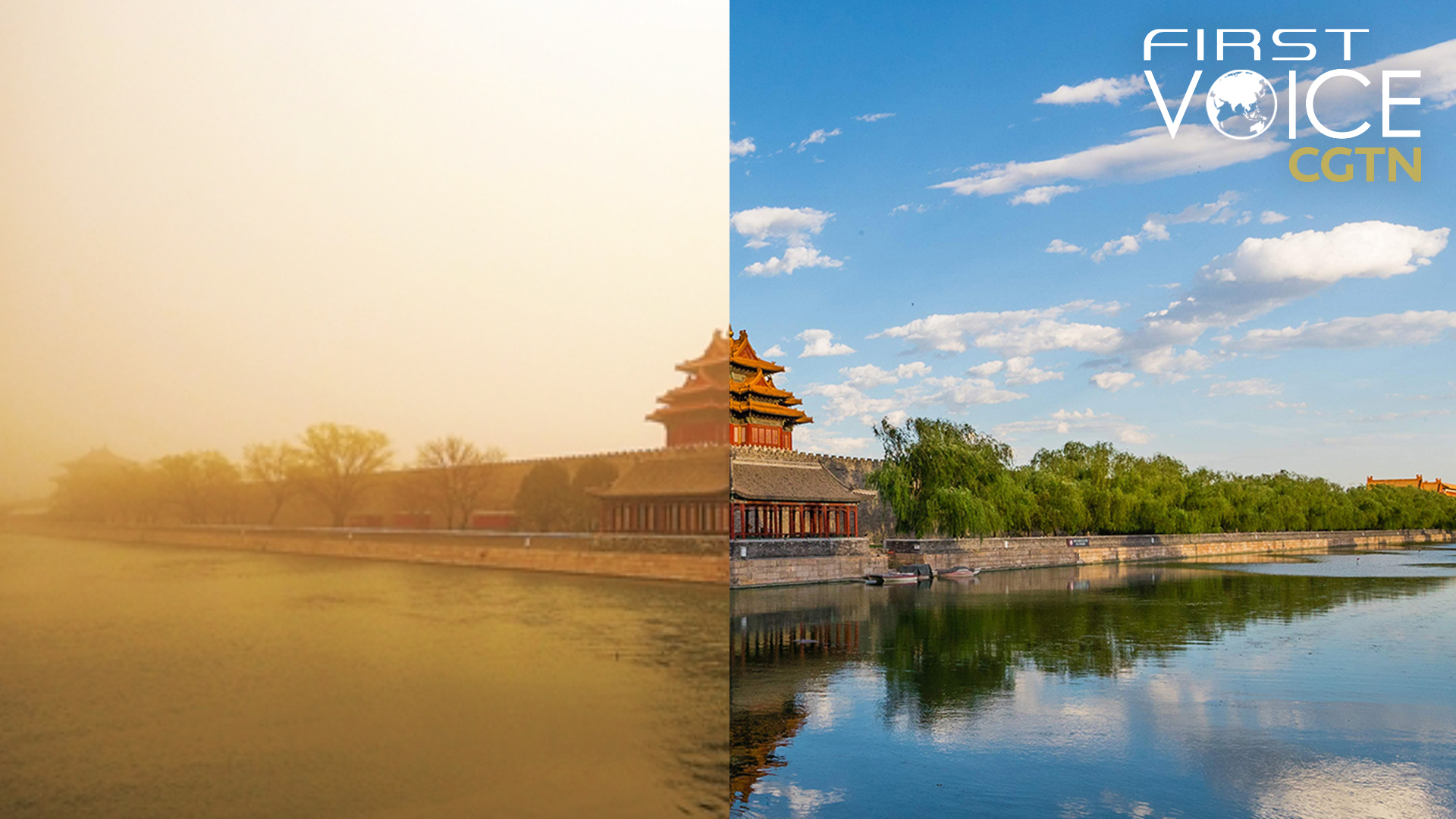
Editor's note: CGTN's First Voice provides instant commentary on breaking stories. The daily column clarifies emerging issues and better defines the news agenda, offering a Chinese perspective on the latest global events.
A sandstorm from the Gobi Desert and Mongolia struck northern China this week, killing as many as 10 people in Mongolia. Yet, such revelations were not reflected in the headlines. The Western media instead focused primarily on the storm hitting Beijing, which was used to convey a wholly negative message.
The BBC, for one, described the scene in the Chinese capital city as "Apocalyptic." The Economist questioned, "Why is Beijing's air quality so bad again?" while The Guardian led with the headline "Beijing skies turn orange as sandstorm and pollution send readings off the scale."
Throughout the outlets that covered the event, most of them sought to tie it to a broader narrative of pollution and sought to use it to portray China in dystopian terms, without accounting for the fact the storm was a natural phenomenon and not from the country at all. There was no coverage of the tragedy in Mongolia at all.
This helps elaborate understanding of the anti-China discourses espoused by the media in the West and the image they seek to box the country into.
Western media repeatedly portray China in "dystopian" terms, revealing a coordinated effort to make life in China appear low quality, dirty, grim and dangerous.
The reasoning behind it is both ideological and orientalist. The first point strives to show China as an inferior society in contrast to the superior and civilized way of life in the West.
The latter strives to emphasize again the aspect of "difference" and affirm a superficial concept of "normality" in the West, drawing again a contrast of backwardness, difference and inferiority.

Screenshot of The Economist article.
Screenshot of The Economist article.
This kind of reporting has a long track record. It was most prominent a year ago when the coronavirus was first reported in Wuhan. Media coverage at the time described the disease along the understanding this was something that could not happen in the West. It was a product of China's apparent backwardness in sanitation and political system.
Many news outlets also drew outright racist conclusions about the virus origins and targeted China culture, too. This sense of complacency was what saw the West fail to take the virus seriously, and subsequently become subdued.
This also contributed to the extreme Sinophobia and anti-China sentiment that followed, as the West was not prepared to accept its own responsibility.
So it is not surprising that many media outlets have always been obsessed with the aspect of pollution in China, which has been a problem in previous years due to the country's rapid development and industrial growth – as is coming in developing countries throughout the world.
However, what the mainstream media do not tell people is that Beijing's air quality has in fact improved dramatically over time. In 2019, the Climate and Clean Air Coalition (CCAC) noted that from 1998 to 2017, the situation in Beijing improved dramatically.
"Beijing implemented a series of measures focused on energy infrastructure optimization, coal-fired pollution control, and vehicle emission controls. By 2013, levels of air pollutants had fallen and some pollutants, like carbon monoxide and sulfur dioxides, met national standards," the CCAC reported.
Those media, however, have not given China a fair trial or acknowledged these successes. Instead, they have sought to use events such as the dust storm in order to draw these political conclusions and sustain a negative and dangerous image of the country in the minds of the Western public, even to the point of completely omitting disaster in the actual place the storm originated.
A quick search on Google News finds nearly every article on the storm was focused on Beijing, and none of them on Mongolia except Chinese outlets.
As a result, while skies in Beijing are getting clearer, the view of China in the West is smoggy and hazardous. The West is subdued by its own storm. That is the storm of Western media bias and ideological, selective reporting designed to deliberately depict China in a negative light.
(If you want to contribute and have specific expertise, please contact us at opinions@cgtn.com.)

